How To Fertilize Tomatoes To Get More Tomatoes!
As an Amazon Associate and member of other affiliate programs, I earn from qualifying purchases.
Although it seems like a simple thing, the way you fertilize tomatoes has a lot to do with the results you get out of your garden. Tomatoes do best when you tailor fertilizer application to their growth stage.
If you’ve ever had huge, healthy plants but no tomatoes, then it could definitely be the fertilizer you’re using.
This post will focus on what type of fertilizer to use for growing tomatoes, but if you want to learn more about the science behind my recommendations, read this post.
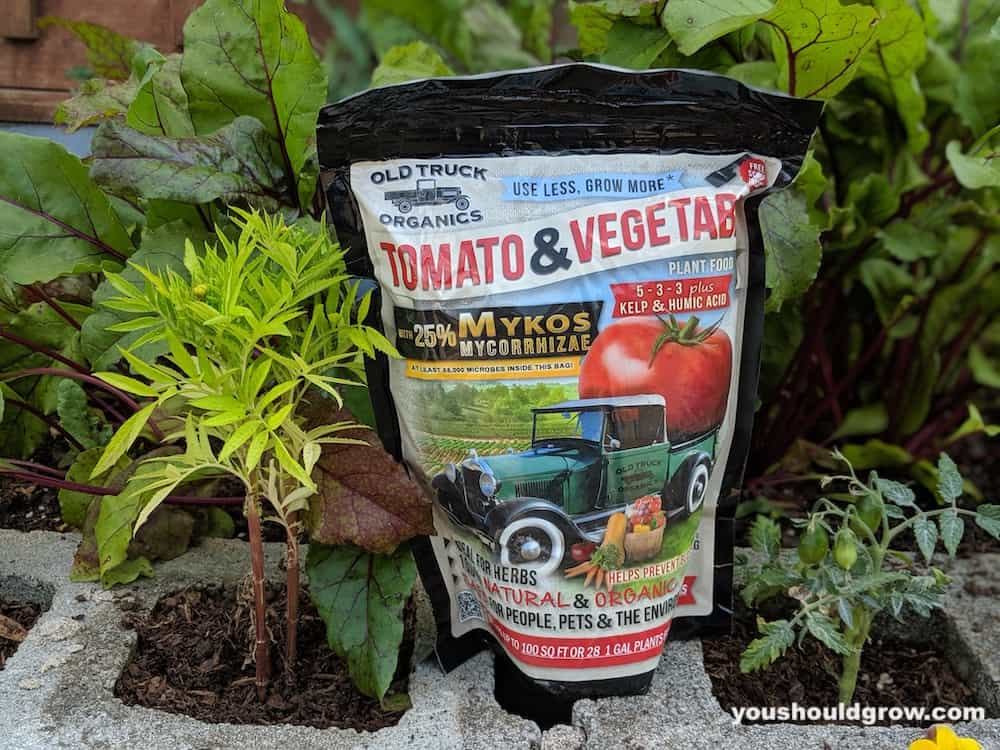
Types of tomato fertilizer
Organic vs synthetic
When we talk about fertilizer, the first thing to consider is whether you will use organic or synthetic fertilizers. Organic fertilizers are made with natural ingredients like chicken droppings and alfalfa meal.
While organic fertilizers tend to be less concentrated, that doesn’t mean they’re less effective. In fact, you can get better results with organic products that provide a slower release of balanced nutrients.
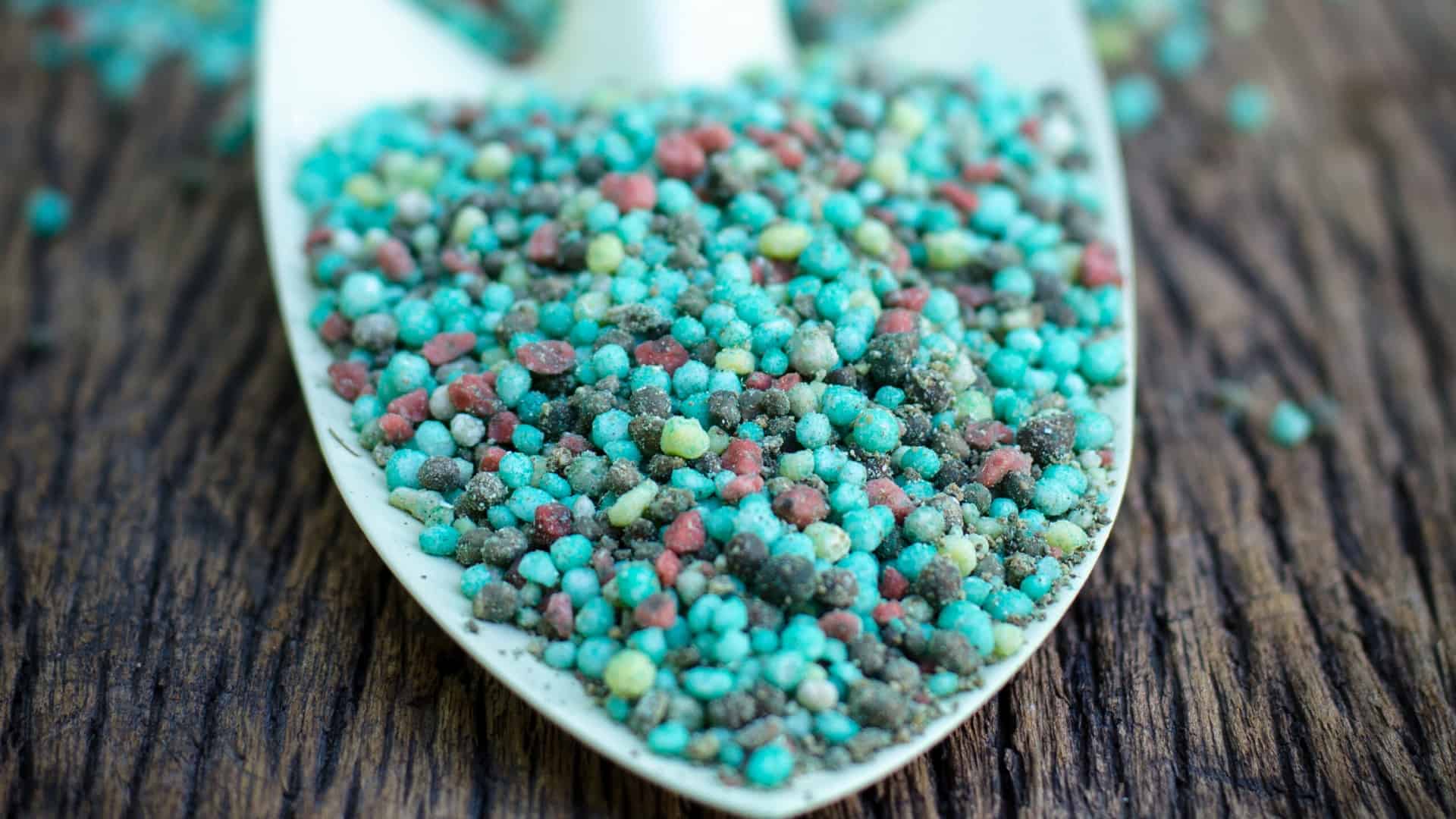
Synthetic fertilizer is usually cheaper and often seems to work like gangbusters. They work very quickly because the nutrients are highly water soluble which makes them easy for the plants to ingest.
But this means you can easily over saturate your soil, and since they also tend to be very high in nitrogen, you can cause irreparable damage like burned leaves and blossom end rot.
Growth enhancing vs bloom enhancing
There are two stages of growth you want to support for your tomato plants. Early in their life, you want to encourage your plant to grow tall and produce lots of leaves. Later as the season goes on, you’ll want to encourage your tomato plant to make flowers that lead to tomatoes.
You know those numbers on the front of a fertilizer bag? They tell you some really important information and it’s vital to get the right proportions when it comes to choosing a fertilizer for tomato plants.
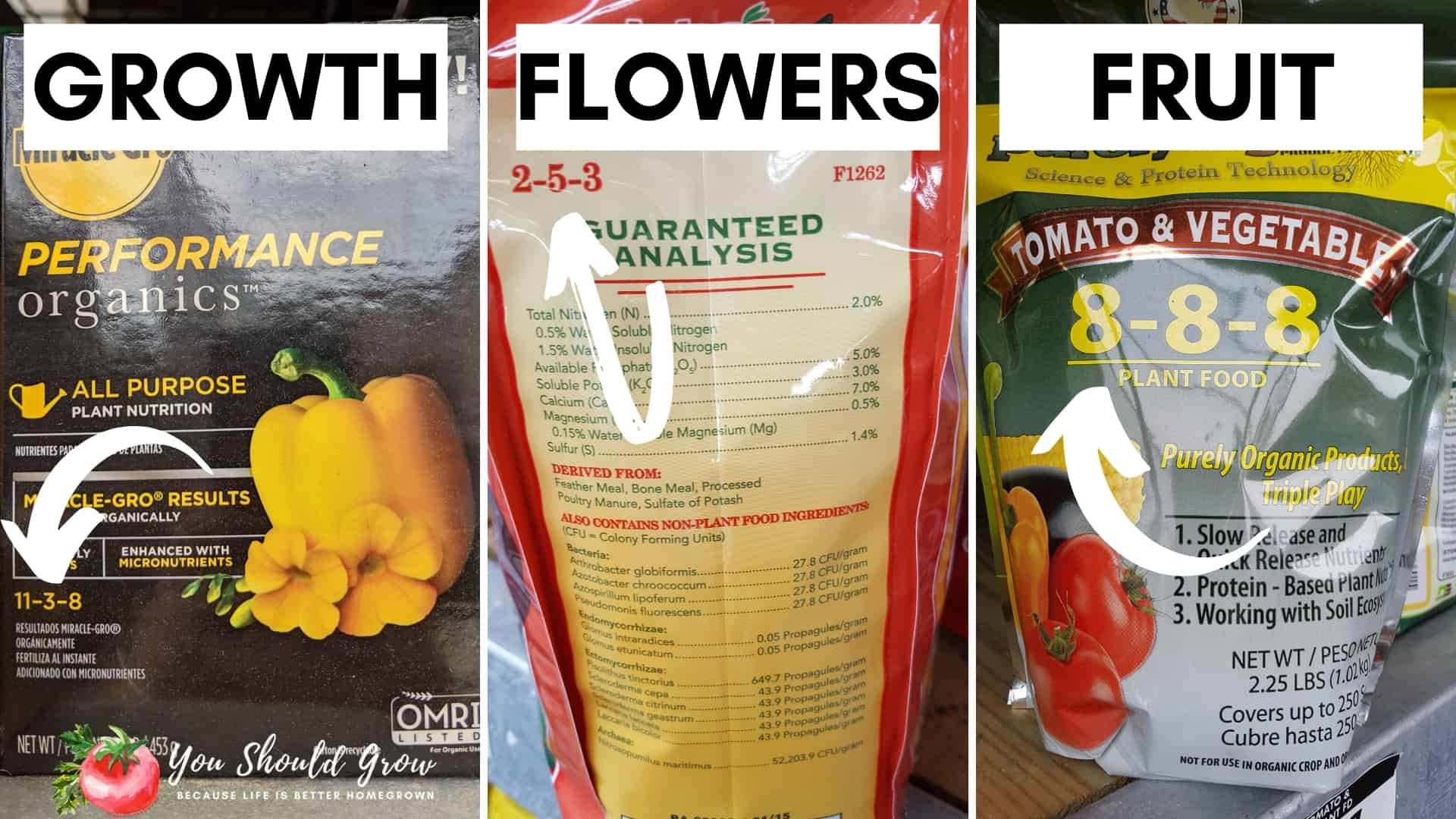
The three numbers stand for concentrations of nitrogen, phosphorous, and potassium in the fertilizer. These are the primary nutrients your tomato plants need. And the first two numbers are the ones you’ll be looking at when you’re deciding which fertilizer to apply to your tomato plants.
Nitrogen encourages plant growth and is best to use early on in your plants’ lives. Choose a fertilizer with a higher first number to use on young, growing plants.
Phosphorous supports flowering and fruit production. When you’re ready for your plants to make flowers and fruit you need to switch to a fertilizer that has a higher second number.
Potassium plays a less obvious but still essential role in supporting plant growth and enhancing immune response to disease. Unless you have done a soil test and know your soil is deficient in potassium, you don’t have to worry about this number as much.
How Often to fertilize tomatoes
In an ideal world, your soil would be full of plenty of nutrients to support your tomato plants. But if you’ve grown in your soil before, or your tomato is sharing space with other veggies, you might find better results by regularly applying fertilizer through the growing season.
The best thing for your tomato plants is to give them an even supply of nutrients to keep them healthy and productive through the season. You should fertilize them every 2-4 weeks, but I’ve heard some tomato growers dilute liquid organic fertilizer to half strength and water their plants with it weekly.
I don’t believe there is a hard and fast rule that will work for every gardener. So much depends on the health of your soil, weather conditions, and where you’re growing. Pay attention to your plants.
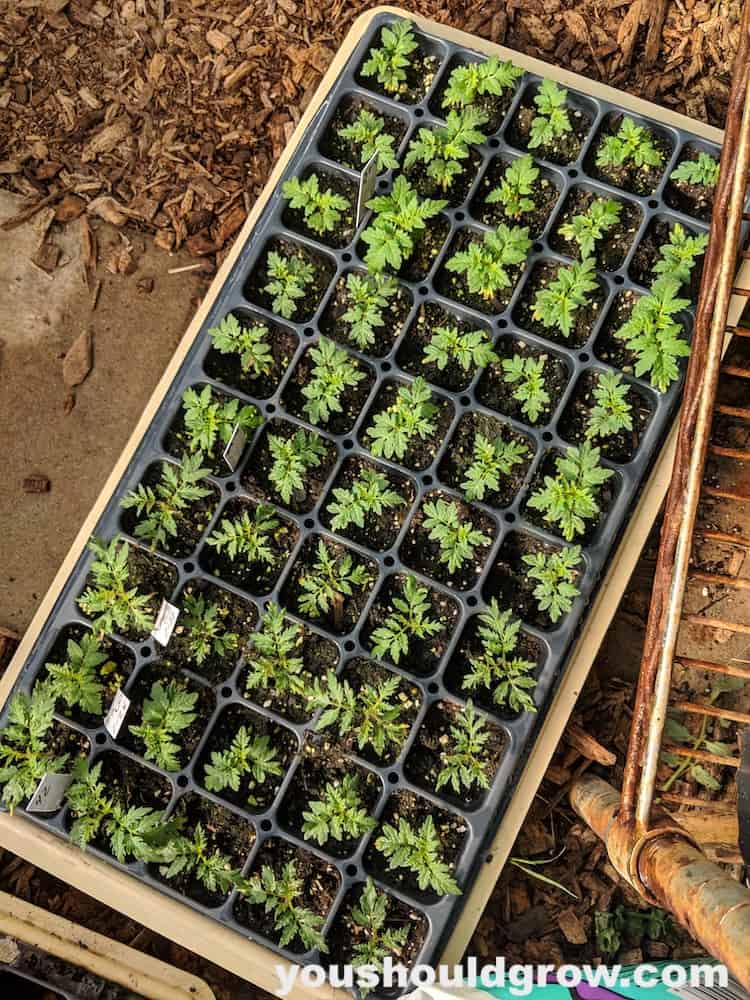
Fertilizing tomato seedlings
Tomato sprouts have enough food in their cotyledons to support initial growth. But soon after they spring to life, you’ll need to supplement them with nutrients to encourage healthy growth.
Start fertilizing tomato seedlings as soon as they get their first set of true leaves. We usually start applying a half-strength fertilizer at the time of transplanting or about two weeks old.
Homemade tomato fertilizer
Compost is a great natural fertilizer that you can make at home (learn how here). You really don’t need a lot of space or time to make your own compost, and it’s a great way to recycle food scraps and other compostable items.
Compost tea is a water solution made from compost. It’s an amazing homemade fertilizer option that supports healthy vegetable plant growth.
There are many other ways you can make your own fertilizer for tomatoes, here are some recipes you might like.
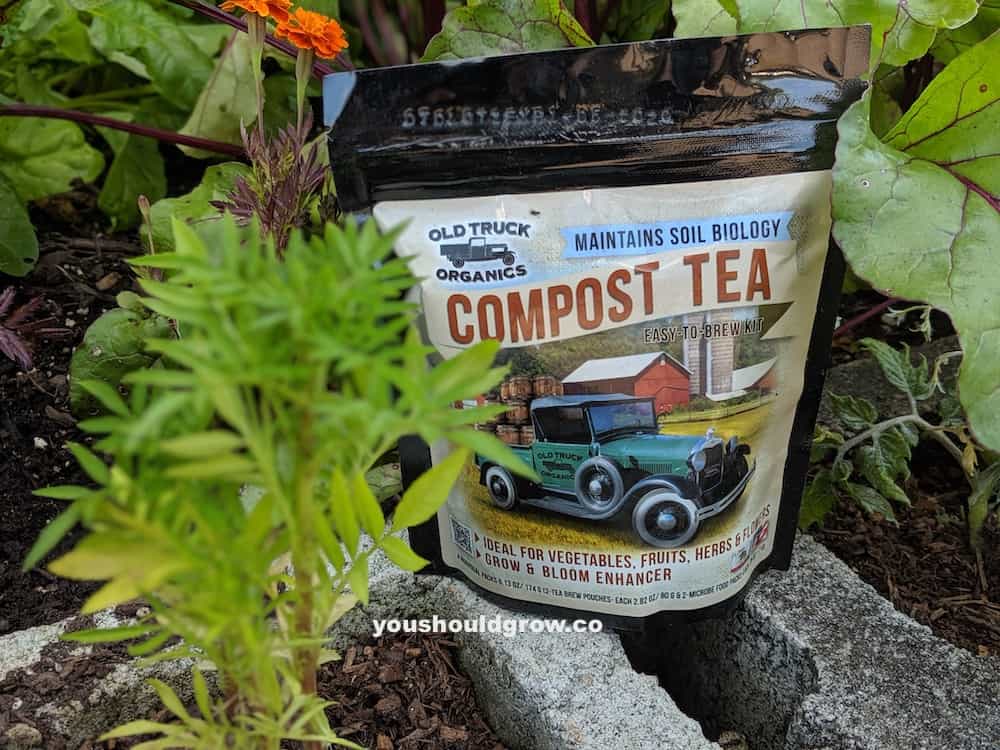
The best fertilizer for tomatoes
The best fertilizer for tomatoes is the one that is easy for you to get and supplies essential nutrients to your plants. However, we do have some brands that we consistently come back to.
Our favorite tomato fertilizers are listed below.
Do you have any tips for fertilizing tomatoes?
Share your experience in the comments below.


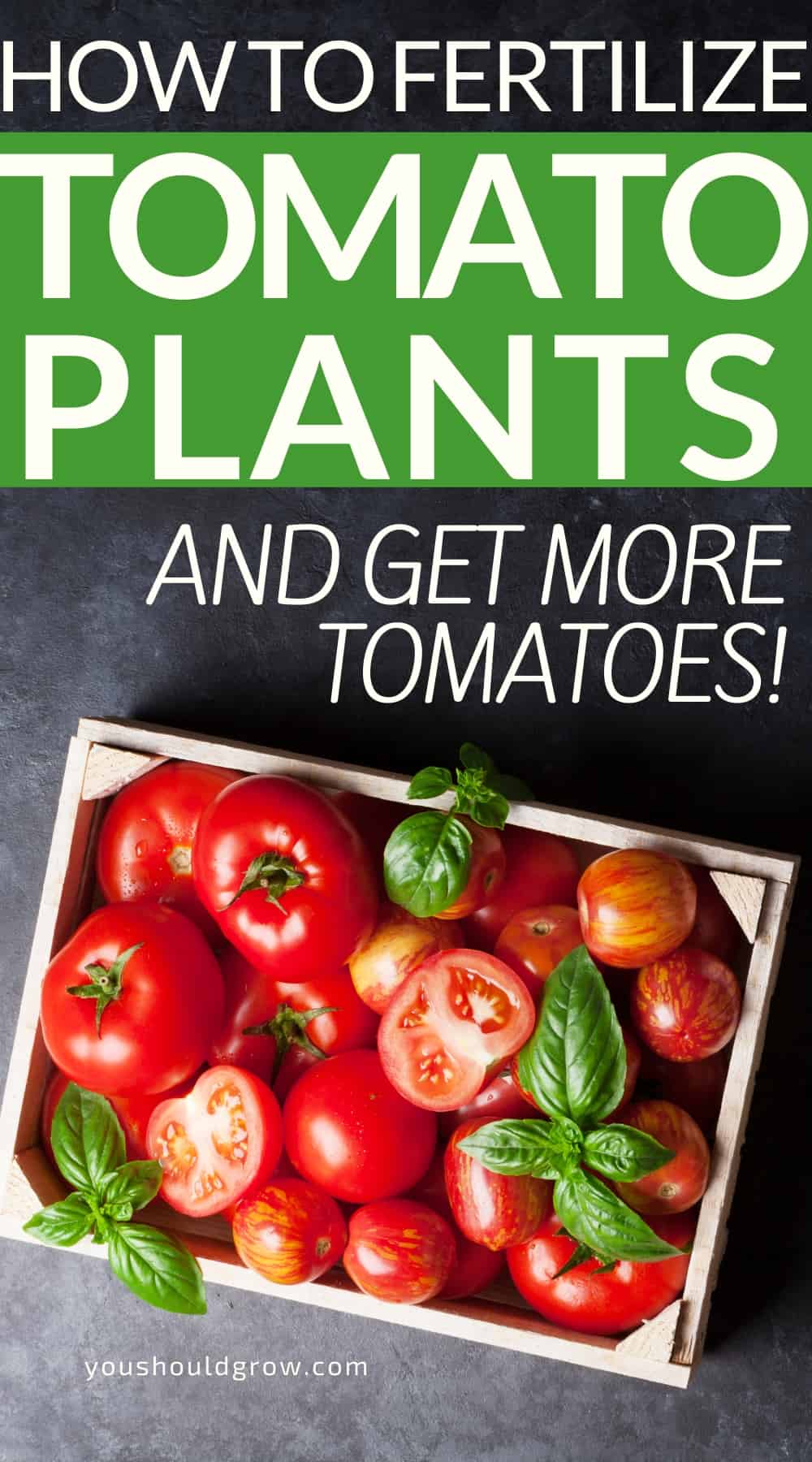
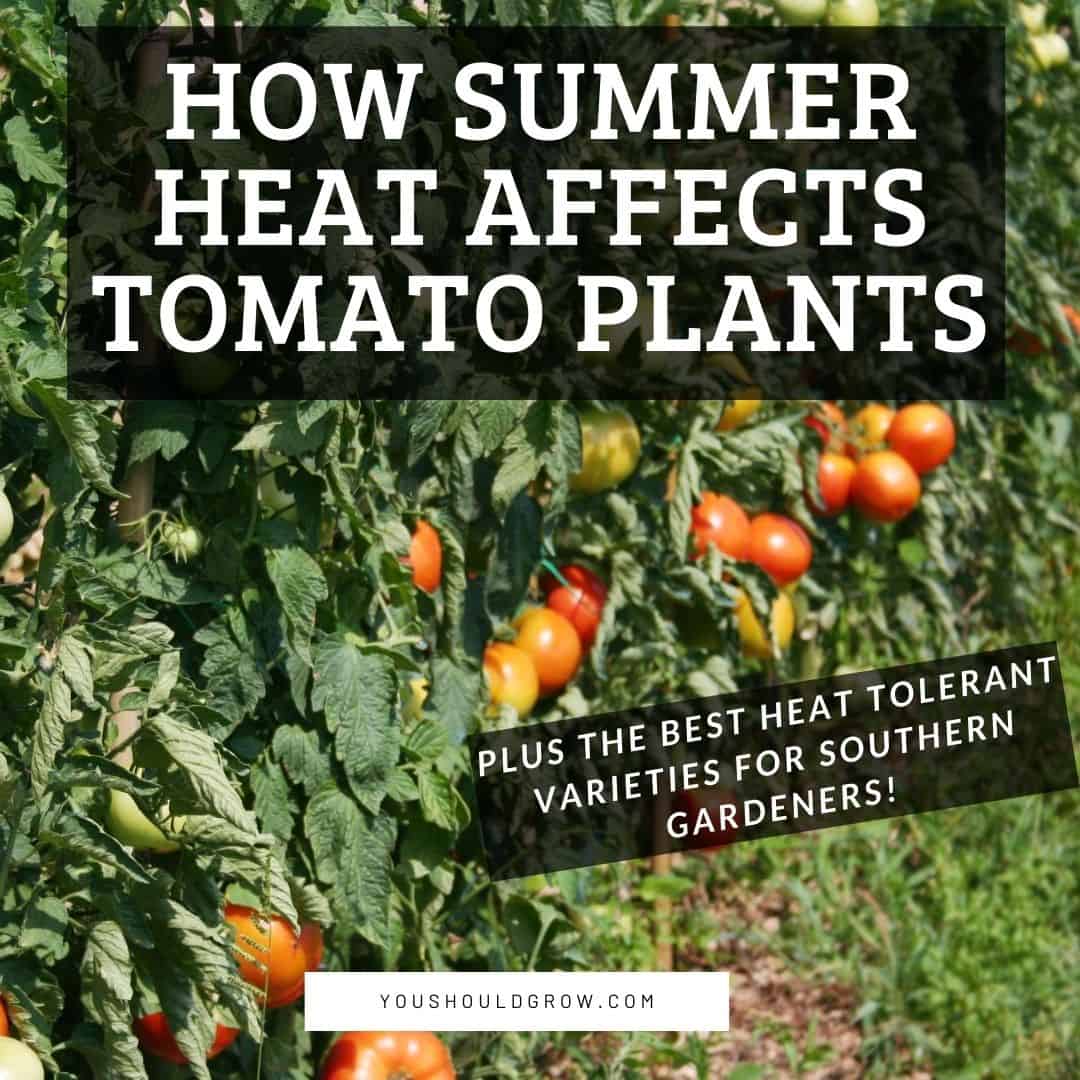
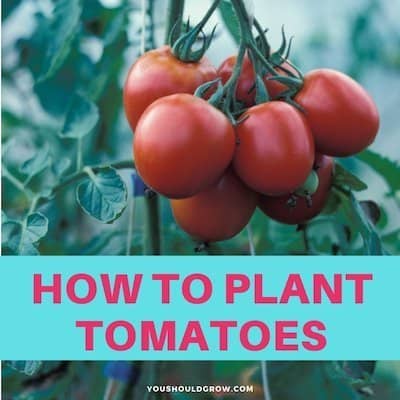
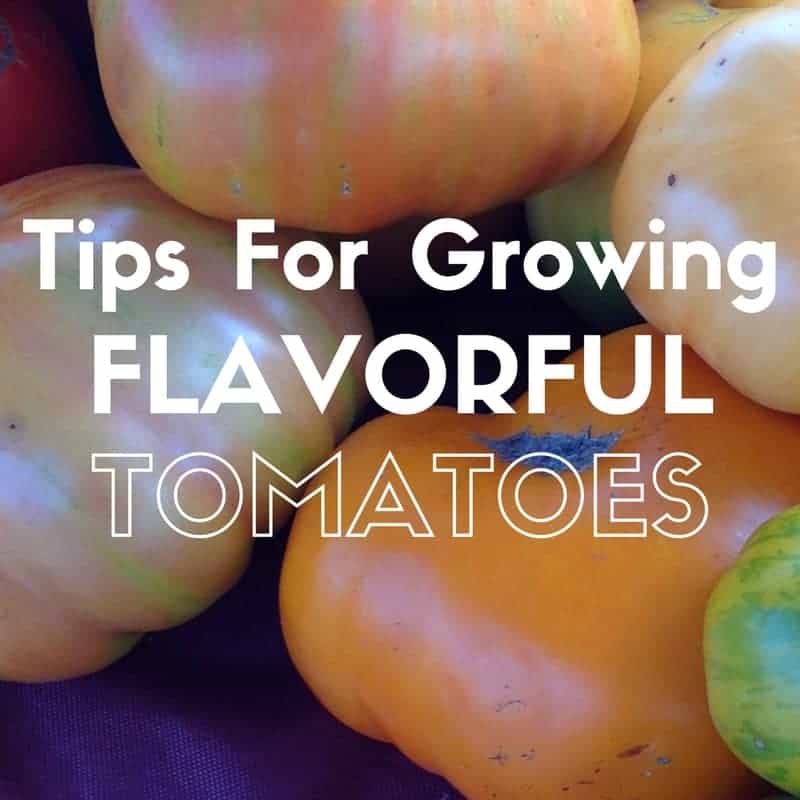
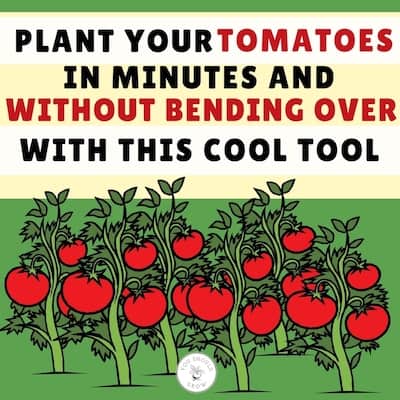
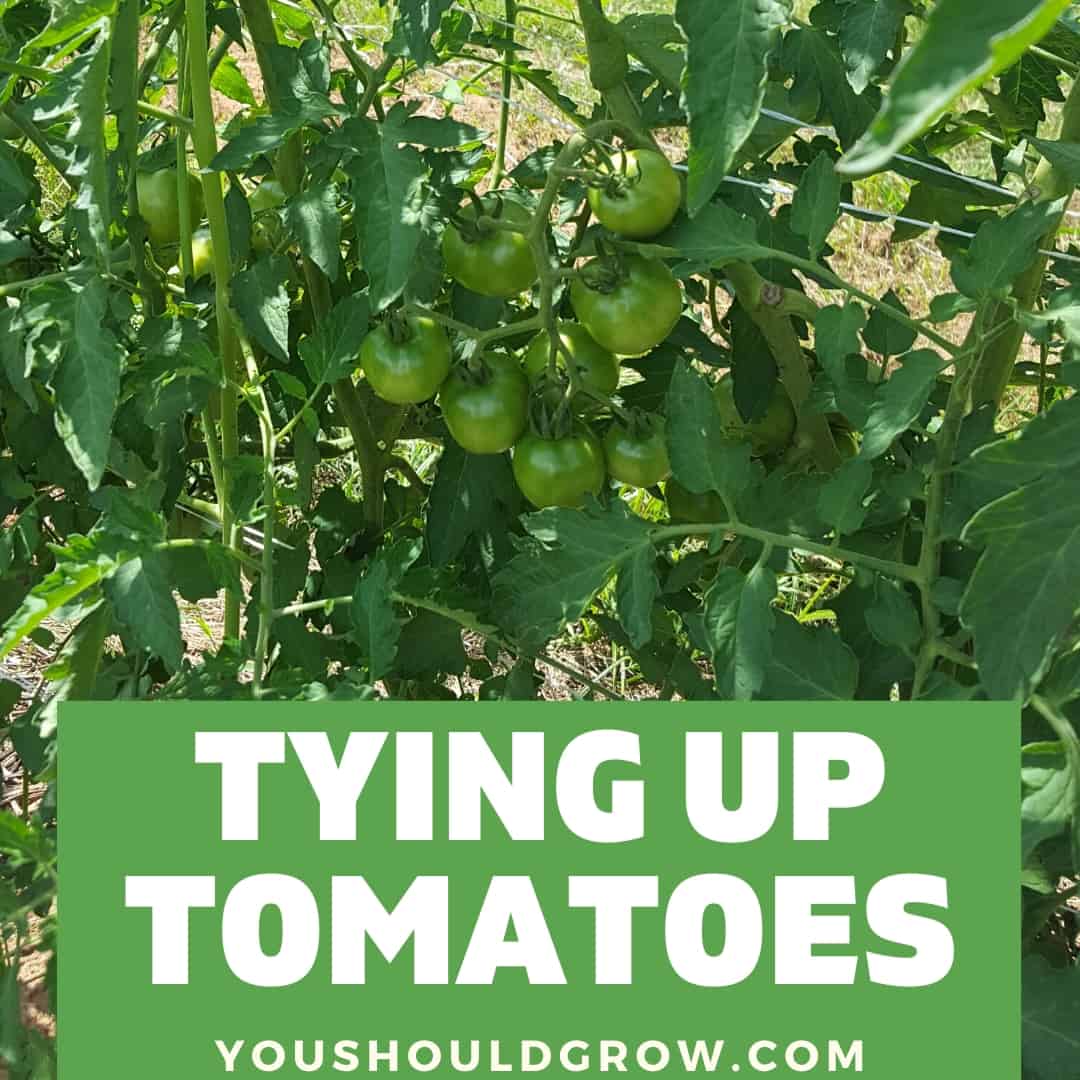
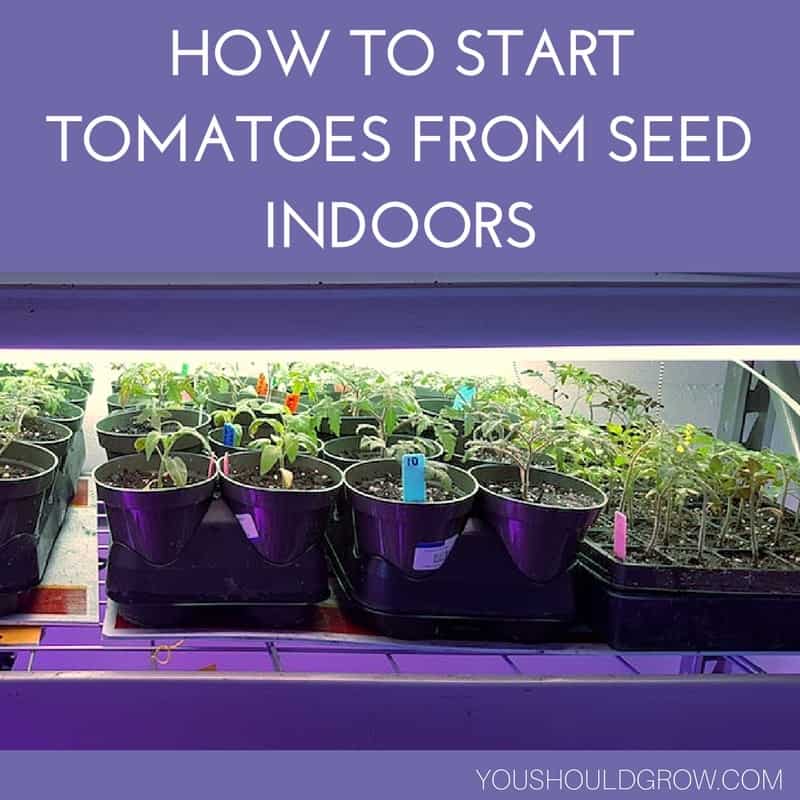
You mentioned that you want the nitrogen to be a high number when your plants are young, but the 4 recommendations you have listed all have a very low number for nitrogen. Do you have a suggestion for those early stages?
I like the tea compost fertilizer. At what stage do you use the tea?
Thank you!